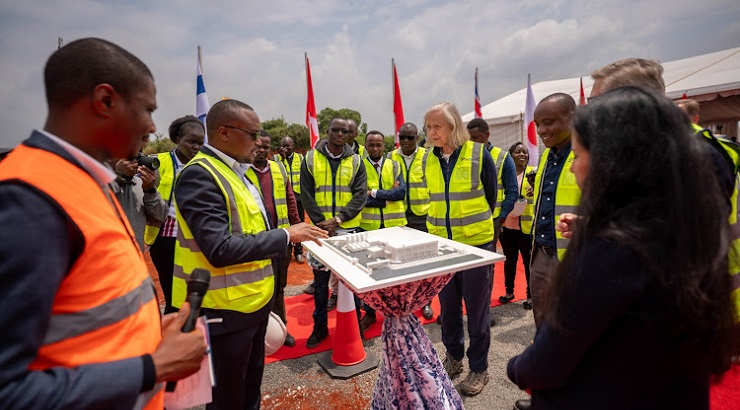Commercial Projects
Work Begins on Sh2.5 Billion Tatu City Oxygen Plant
The plant will raise daily production of medical oxygen to 20 tonnes.

Construction has begun for East Africa’s first state-of-the-art liquid oxygen manufacturing plant, a game-changing healthcare initiative across the region.
Groundbreaking for the facility, based at the Tatu Industrial Park within the Tatu City Special Economic Zone, was held last week in an event attended by United States Ambassador Meg Whitman and Finland’s Ambassador Pirkka Tapiola.
The project, supported by a Sh2.5 billion investment from international development partners, is the brainchild of Hewatele, which is driving a major improvement in the region’s medical-grade oxygen supply.
These partners include the US Development Finance Corporation, Finnfund—the Finnish government, Grand Challenges Canada, the Soros Economic Development Fund, and the UBS Optimus Foundation of Switzerland.
According to Hewatele founder Bernard Olayo, the project will ensure that high-quality oxygen is accessible consistently across facilities within the region.
“Provision of access to quality emergency healthcare services is a basic human right that enhances quality of life, thereby allowing citizens to focus on business and personal development,” said Olayo.
RELATED: Moderna Halts Plans for Sh62bn Kenya Vaccine Factory
The plant will raise the daily production of medical oxygen to 20 tonnes.
Whitman described the initiative as one of the major windfalls for Kenya, adding that America was proud to partner with Hewatele to build the oxygen plant.
“This facility is a win-win for Kenya. It’s going to improve health care in the country and provide jobs in a growing industry,” she said.
Tapiola, the Ambassador of Finland, said the project will provide an affordable oxygen supply chain and ensure effective emergency preparedness.
“Finland is proud to be associated with this support, and we indeed believe in its huge development impact on health in Kenya,” he remarked.
The new oxygen plant is expected to address shortages in Kenyan hospitals, improve emergency preparedness, cut costs, and save lives across East Africa.














